By Aaron Kuehn
I’m not ready. At least not yet. Every day I get closer. Closer to being ready to live in a tiny house.
Living “tiny” is not a new concept to me. When I was a child, my parents were avid fishers and we would spend months at a time in the deep woods of Canada. My dad, mom and I lived for those extended periods of time in a 23-foot travel trailer. It never seemed cramped nor odd to me. It was cozy and comfortable. We had everything we needed. Even as a kid I marveled at the efficiency of that RV. Every nook and cranny was used for something.
I’ve also been impressed by the clever layouts that hotel designers have pulled off. In small spaces they have created functional and comfortable environments. I often find myself saying “I could live here” when spending time in a hotel room.
So the tiny house has always been on my mind and I believe that someday my lifestyle and a tiny house will merge. As time goes by, the practicality, and thus the reality, of such a life change becomes all the more tangible.
There are many perceived barriers to living in a tiny house. Most of them revolve around the “tiny” part: we hunger for space and we fear letting it go. However, the past several years have seen several technology improvements that allow for more efficient use of space and thus make the tiny house choice much more attractive.
TELEVISION
When the power goes out usually the first thing I miss is the TV. We have now said goodbye to the large, heavy, tube-based TV set in favor of the small, thin, lightweight, cooler, more efficient flat-panel design. This is a change that huge numbers of people have adopted in their homes. But it’s an even bigger deal in the tiny house.
Think of the cubic feet of space required for the old-fashioned TVs of just a few years ago. In a tiny house a large percentage of space was required to have a TV, particularly if you wanted one with a serious viewable area.
Today you can have a TV that literally takes no more room than a piece of hanging art. And it’s sizeable enough to actually enjoy the picture and the pricing is no longer the obstacle it once was.
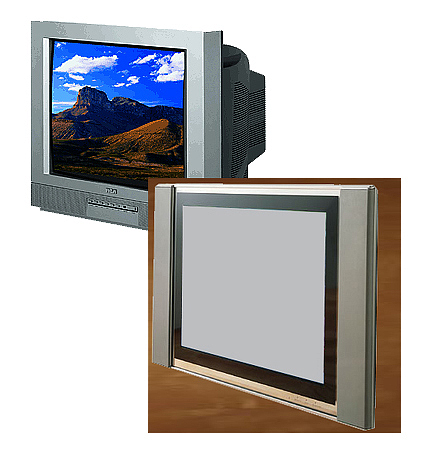
If you choose to get your viewing by satellite, that continues to have little impact on the tiny house footprint. But over-the-air signals are now delivered in high-definition so you have real viewing options with small HD antennas. These antennas can simply be hung on the wall next to or behind the TV. You no longer need an aerial on the rooftop or rabbit ears sticking into your ribs to get a signal.
New TVs also offer the advantage of being easily mounted on arms that allow the TV to be viewed from a variety of vantage points in the tiny house. Doing so with a 50-pound TV was possible, but rarely practical in a tiny house.
COMPUTER
A similar shift has taken place with computing options. Not that long ago if you wanted to have serious computing power you needed a computer tower, a monitor (practically the size of a TV set), speakers, cables, cords, a desk, a printer. The list could go on.
Recent trends in computing technology and Cloud computing make it totally practical to use a laptop or even tablet as your sole computing appliance.
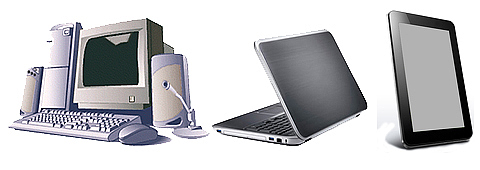
The space savings are enormous. Today’s tablet computers, taking no more space than a magazine, coupled with wireless access and Cloud-based software and storage, mean you can have all of the computing power in negligible space. You need not give up a thing.
Even in my un-tiny house, I have moved most of my computing to a laptop computer. In fact, the vast majority of the time my 10” tablet is all I need.
For those considering the tiny house lifestyle, the ubiquitous computer no longer needs to be a behemoth in the corner that requires its own furniture. Rather it is a small, efficient portable tool whose space requirements are nil.
READING
Even if you make use of a library, books still take up space. And if you purchase books, still more space is needed to keep and organize the printed word.
Today it is possible for the tiny house dweller to enjoy an even larger library housed within the confines of a small reading device or the Cloud. You can save even more space by using your primary computing tool (laptop or tablet) as your reading platform as well.
Now you can buy, borrow and read to your heart’s delight without the need for shelving and other storage. A tablet or laptop is all that’s required. Just a few years ago if you had a tiny book collection your tiny house would need to devote precious real estate just for those books. Today there need be almost no thought given to the storage of reading matter.
MOVIE RENTALS/ON DEMAND
The convenience of today being able to stream or rent video entertainment on demand has changed the way we might enjoy tiny house living. As always, everything we bring into our houses requires some amount of storage: everything has a footprint. Even if the “thing” is just a videocassette or a DVD sleeve, it must live somewhere. And it needs a space-consuming device in order to play it. Now whether you use satellite, cable or the internet, you can get on-demand video without additional space requirements. The savings of having to drive, pick up, drive, return may be obvious. But there are additional savings for the tiny house dweller: no additional space is required if you suddenly want to wrap up with a bowl of popcorn and enjoy a flick.
TINY IN THE KITCHEN
Popcorn leads us to the kitchen. Popcorn of course isn’t the best example here. We’ve had microwaveable popcorn in tiny space-saving bags for a long time. But other changes have made the tiny kitchen in the tiny house a more useful place as well.
The kitchen is perhaps a harder place to save space because so many of the tools required in a basic kitchen have a minimum footprint with which you cannot barter.
Silicone cookware is an amazing alternative to traditional baking sheets, muffin pans and baking dishes. Silicone is so flexible you can roll it up and squish it into otherwise unused space. You don’t have to give up on the baking options available to you, nor do you have to devise complicated storage methods. Silicone can give you all the options in the space of a few inches.

Another way to save space in the tiny house is to make each tool do more than one job. More popular today are convection microwave ovens. These dual-purpose tools give you the speed of microwave cooking as well as a traditional oven all in one. In the past the tiny house dweller would probably have both a microwave and an oven. Without giving up on capabilities, you now can have a single tool that does both.
HOT WATER
Popular in Europe for years but now seeing some traction in the U.S., on demand or tankless water heaters offer a tremendous space savings in the tiny house.
You don’t need to compromise on a small quantity of hot water nor give up the space of a small closet to house a traditional tank model water heater.
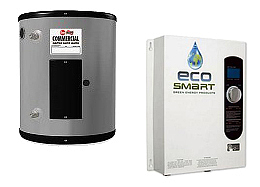
Even if your tiny house plans call for an RV-style water heater, which on its own doesn’t take up much space, a tankless unit provides greater efficiency and none of that sudden chill when the hot stuff runs out before you’re done with your shower.
A tankless water heater can hang on the wall, even inside a cupboard, and provide nearly endless hot water. Not only do you get a more energy-efficient system, you get all the hot water you want without dedicating much space to the unit. In this case you get so much more for so much less.
CLEANING UP
For me one of the worst household chores is laundry. The tedium is multiplied if I have to schlep the dirty clothes to a pay laundry. A huge part of a house being a home for me is being able to do my laundry at home.
Perhaps the obvious choice for those who want to incorporate clothes-washing in their tiny house is a stackable washer and dryer. Another option is the combination unit: a single machine that washes and dries.
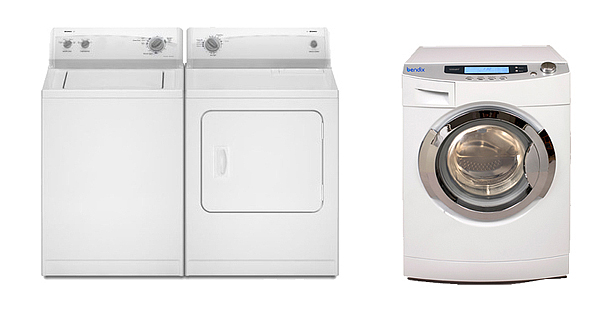
Taking up the same space as a single machine, the combination option frees up the storage bonanza that would be taken by a dryer in a traditional stackable unit.
Living in a tiny house is getting more and more practical with each passing improvement. This short list alone shows that living in a tiny house is less about what you must give up or adapt to and more about embracing the lifestyle of less.
I may just be ready after all.
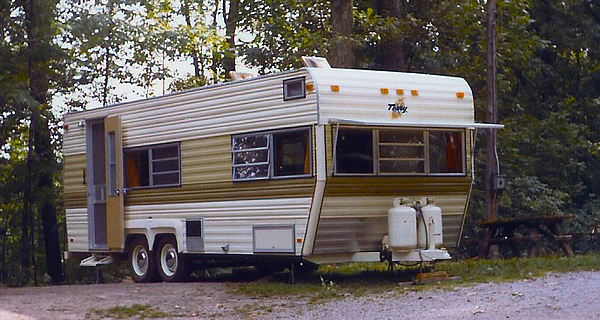
Great article! And so true! Currently, I don’t have a TV, but then I am more of a reader, and I do have my iPad to keep me company in my tiny house. As far as laundry, with 4 grown kids, I don’t have to go to a laundramat. Lol! I just visit the kids! My diet, also, is old fashioned as I love fresh vegetables and fresh meat, so I cook on the stovetop or on the grill outside. Life is sweet in a simple and small home. Right now I have to go vacuum because I just “remodelled” my kitchen (had to enlarge the hole for a new sink) and there is sawdust from the saw, so that should take me about 5 minutes. Lol! Thanks again for the article. You have shared much insight for those seeking a “tiny life”. It is not for everyone, but for those it is for, go for it!
Great list! Another space-saving technology worth a mention is using vacuum-packed storage bags to store off-season clothing and bedding.
Mili
Excellent points!With so many counter top appliances now that do double duty and more and are compact, you don’t even need a stove anymore.
What a great post! I’ve been saying this myself, that our electronics are a big part of what makes going tiny possible for those who prefer to retain their various media. I love my Kindle reader, and more of my movie/TV viewing and music listening is done from the Cloud, which is awesome. My husband, unfortunately, loves his hard copies, so we will probably always have our 1000+ DVD and massive fantasy/sci-fi paperback collections. Le sigh.
One thing I cannot see downsizing just yet, though, is my computer. I’m a bit of a gamer, and the specs required for a lot of graphic-intense PC games simply cannot be safely met with a laptop. Plus, I have an awesome but rather large ergonomic keyboard that’s a must. Typing on a laptop keyboard would make me crazy. And be painful. A full computer doesn’t really take up that much space, though. Certainly less than the big clunky stereos many of us used to have.
The kitchen really is the toughest one, I think. I have a 12-quart stock pot I use frequently, and a lot of tiny houses have tiny sinks in which it would be extremely difficult to wash the thing. So there’s that. Also, food storage. Lots of tiny houses don’t seem to have pantries, and I often find myself wondering how often the people in them have to shop. I don’t need a huge walk-in pantry, but something more substantial than a couple of open shelves would be needed.
One of the most exciting things about this post is the washer/dryer combo. How cool is that! If I had a good setup for line drying outside, I’d love to have one of those NOW, even though I don’t need the extra space. With a line outside, there’s be no worries about someone else waiting to use the machine. Versatility, ftw! 🙂
Darlene, the difficulty of using large stock pots and the lack of a large pantry for both purchased and home canned foods are future changes that have given me pause, too. I have recently tried to change my lifelong habit of cooking large amounts of food, allowing for portions to be frozen for use on those nights when boiling water would be a challenge for me. It is really more energy efficient to prepare more than the minimum number of servings but with the small refrigerators and their even smaller freezer sections, even short term storage could be a problem. I’ve tried to work through whether the additional energy costs for preparing more, smaller meals would be offset by the reduced energy of the smaller refrigerator/freezer. I am still working on this evaluation. Also, I realize that the additional preparation time each day would not be something I would look forward to doing. I suppose that renting a locker at a meat processing plant might be an option so I would not have to CHANGE. But then I would have to factor in the rental cost and the transportation cost of the back and forth to the overall cost….. I have a sign that says “Change is a four letter word!” Some days that sounds just about right!
I wish they would make a compact refrigerator with a more equal fridge/freezer ratio. The freezer on my 10 cu. ft. fridge is usually packed and the fridge compartment sparse. My ideal would be about 4 cubic feet in each. -And energy efficient of course.
Check out some of the really efficient ‘homestead’fridges, like Novakool. They come in a wide variety of configs… Like half freezer, half fridge. You pay a bit for them, but the compressors us something like half or less energy than usual ‘energy star’ appliances.
Thanks for the suggestion!
I looked at their site and did see some models a little closer to what I would like, but as you say the prices are awfully high.
It appears that most (or all?) are 12VDC or combination AC/DC. I really don’t need DC and hate to pay for it when not needed.
And I don’t see any models with anything near 4 cubic feet for each fridge and freezer. That is what my ideal would be. Everyone makes the freezer much smaller than the fridge!
And even though they claim they are efficient, I don’t see any energy star ratings.
I think that a park model would be better suited to people who require more of a full size (small) kitchen area.
about the food storage.. I have some friends. they used the interior wall space as a canned good dispenser.. you put the new cans in the through a gap in the top and pull the oldest ones from a gap in the the bottom. there is a small 1/4 in lip on the bottom to keep the cans from shooting out. it is the backsplash area of their kitchen (above the base cabinets and below the uppers).. thought it was a really cool idea. the kitchen wall they use has the bathroom on the other side so there is no insulation.
What about investing in a GOOD dehydrator? Storing dehydrated food can be done in a much smaller space such as foil sealable bags, glass jars, etc, and require only water (if that!) to resume the original appearance. I believe it also preserves nutrients and can preserve certain meats as well.
The other big advantage of dried food is that it remains unaffected if your house freezes.
What is the manufacturer of the washer/dryer combination unit, and where can I purchase it. The single W/D unit that washes and dries all in one machine.
I got a used, ventless Thor combo washer-dryer through Freecycle for free (except for paying a friend to drive me to pick it up and get it home).
Thor Appliance Company
268 Avenida Montalvo
San Clemente, CA 92672
(877) 877-0540
http://www.oasisappliance.com
I have enjoyed reading your comments. My name is Jay Olstead, owner of Ragsdale Homes ” Tiny Homes on Wheels, land, and water. Our concepts as they relate to the tiny house industry are just short of revolutionary. After many years of research and development, dreaming, planning, model building, and consulting with architects, Ragsdale Homes is officially announcing that their newly founded company is in Pre-Launch stage with it’s ” Next Generation” of Tiny Homes. On a custom designed trailer, with approx. dimensions of only 8 ft. by 20ft. our first home will be pushing the envelope with interior dimentions of over 380 sq, ft. Additionally, there will be over 284 sq. ft. of wood decking. Some of the features included will be a 8 ft. by 7 ft. glass and aluminum bi -fold aircraft hangar door, our proprietary Tropospheric Water Precipition generator, 180 sq feet observation deck with organic square foot gardening, and more. Send me your email address and I will send you a Press Release. Additionally, you may view an animated presentation on You Tube….Ragsdale Homes Tiny Houses On Wheels. Next week we will present a 2 minute animation with additional views of the outside and the inside. I forgot to mention that we have a patent pending on our exclisive Room ” Roll Outs” which can be ordered for any home. Our home will sleep 6 comfortably. Cho
Love this article! It goes in my file to keep for reference. Thank you for writing it.
I have enjoyed reading your article.
You express a grasp of good living and adapting technology in a small footprint.
That’s what it is all about.
Anyone can live like a travelling carney if they choose, but they should refrain from labelling it as a liveable small structure building if it does not support all aspects of day to day life.
This is one of the best articles here lately.
Thank you for sharing.
LOVED your story. That you pointed out some very real ‘must haves’ that were once considered luxuries that don’t necessarily have to be ‘done without’ when going small was a nice touch. Our lives don;t have to ‘suffer’ just because we move to a small footprint, thank goodness!
Another item I loved ‘discovering’, some years back, was a $20 miracle, purchased at my local super-housegoods/diy store: a battery-operated ‘flourescent-style’ tube light strip (not glass, but looks it, mounted in a 5″ wide by 17″ long by 1&1/2″ thick housing with an easy on/off switch) that can be attached to ‘under’ or ‘over’ any cabinet by using the enclosed screws OR double-stick adhesive strips (it’s THAT light!). I placed one such little unit under he cabinets above my kitchen sink, adding much-needed lighting to a previously dark area. I found I enjoyed doing dishes MUCH MORE when I could actually SEE what my hands were doing, afterwards. 😉
It used 4 double-A batteries, and since I only had it on several days a week, maybe a half hour at a time, I had to change the batteries maybe two times a year, if that much.
So I imagine this would be great to have in an off-grid kitchen area… or over a workspace/desk, even in a tiny bathroom (or outhouse!)…
Great story, as it looks more closely at the options we now have, these days, in the ‘appliance’ end of small house living. 😉
As a non-techie, how do you get internet service? I don’t really understand the “over the air signals” without a satellite dish. I also love using the laptop solo. Thanks for all your ideas.
@F Coddington: For internet you would indeed need either a hard-wired service, a satellite service or community or “shared” WiFi access.
I loved your article! I lived in assorted RV’s for years including one nearly identical to the one you showed. My favorite RV was a 35′ double tip-out park model trailer that included my full sized piano, queen size couch/bed, free standing dining table/chairs, fridge, and even a house size bathtub that led into my bedroom that had a roll top desk and queen size waterbed. Having 6 or 8 for formal dinners was common. This proved to me lack of square footage doesn’t mean lack of livability. It’s just in how you use every single inch of space. Way back then we didn’t have the great tech we all consider necessities today and even washer/dryers had a lot of room for improvement. One thing I dislike about the tiny house idea is they rarely use upper wall space the way RV’s do. That’s a lot of precious storage space if you ask me. What I can’t figure out is why people haven’t found more “middle” ground. There really is a lot you can do with 650 – 900 square feet “if” every inch is carefully designed. We’re in the early stages of building a quest house in that size range that we might even move into someday (after I pass away – my wife a widow) that will then turn the main home into a rental yet we’ll still have our five acre park of land we enjoy. I like where your head is at 🙂
Inspirational…. I live in Australia and have a motor home for travel…. I love the lifestyle and opportunities to move around… My wife is not interested so I am now doing more of it by myself and the bug has bitten me… Getting the whole thing working properly is the challenge… Led lights, solar panels, batteries, satellite TV, music via USB sticks. Throw out the micro wave as its power hungry and ventilate the back of the fridge to improve the cooling and make it more efficient…. Exciting stuff…
Yes, the ability to make compact many of the things we take for granted and that are space consumers allows us to live comfortably (and that is the challenge) in small spaces on land. Since the early 1970’s, recreational sailors and boat builders have found ingenious ways to bring more creature comforts into the very confined spaces of sailboats. The galley of a small sailboat is a wonder of planning and ingenuity, much smaller than the average kitchen in a holiday trailer. The oven, if there is room for one, is quite small but very functional. The problem many of us here are trying to solve is how to live comfortably, safely, cheaply, and with a degree of freedom to move and explore, and less wage slavery. With so many of the world’s population migrating to cities, is there a place for the Nomad in this century? Perhaps the sailboat offers more flexibility and ability to lead a more nomadic life for awhile. Certainly the space requirements for living are very small, and the cost to move around much less than the land yacht. In harbor cities all over North America liveaboards work and play in the city core, but have their home on water all year long in all weather (yes even in Canada with a cold winter), paying very little in mooring rent to do so, in some cases nothing at all.